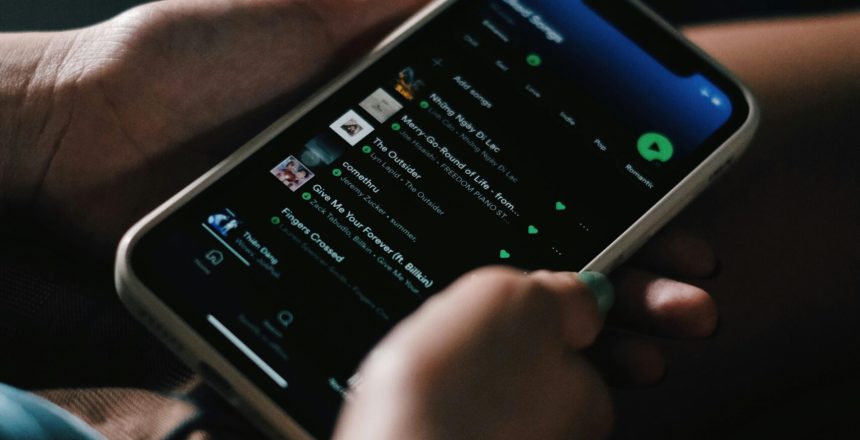If you’ve ever wondered how Spotify’s algorithm functions, you’re not alone. The platform’s powerful recommendation system determines which songs reach millions of listeners daily — and understanding it can transform your music career.
For musicians, learning how Spotify’s algorithm functions is the first step to increasing visibility, getting on algorithmic playlists, and growing your fanbase organically. Let’s explore how it all works and what strategies can help you succeed.
An Overview: How Spotify’s Algorithm Functions for Musicians
Spotify’s recommendation engine is powered by artificial intelligence known as BART (Bandits for Recommendations as Treatments). To fully grasp how Spotify’s algorithm functions, it helps to know how this AI interprets music and listener behavior.
BART’s mission is simple: keep users listening by balancing songs they already love with new tracks they’re likely to enjoy. It analyzes massive amounts of data to make every recommendation personal and engaging.
Core Components of How Spotify’s Algorithm Functions
Spotify’s algorithm depends on three main technologies:
- Natural Language Processing (NLP) – Analyzes lyrics and themes.
- Raw Audio Analysis – Determines the mood and sound of a track.
- Collaborative Filtering – Compares listener habits to recommend music with similar tastes.

How Spotify’s Algorithm Functions Using Listener Behavior
Like all smart recommendation systems, Spotify’s algorithm functions by learning from user behavior. It constantly measures how listeners interact with songs to decide what to recommend next.
Key Data Spotify Tracks
- Listening history (moods, genres, styles)
- Skip rate (fewer skips = better algorithm ranking)
- Listening duration (especially past 30 seconds)
- Playlist placements (personal, editorial, or algorithmic)
These signals tell Spotify which tracks people love — and which ones to promote further.
The Core Elements of Spotify’s Algorithm
1. Natural Language Processing (NLP)
Spotify examines lyrics, titles, and descriptive text to understand the language, meaning, and emotion of your music.
2. Raw Audio Analysis
This technology evaluates the sound characteristics of your track — its mood, energy, rhythm, and overall vibe.
3. Collaborative Filtering
By studying what similar listeners enjoy, Spotify recommends songs aligned with each user’s unique taste profile.
How Spotify’s Algorithm Uses Metrics and Listener Data
A key part of how Spotify’s algorithm functions lies in data. Like social platforms, Spotify tracks how users interact with music and rewards songs that inspire engagement.

Top Spotify Metrics That Affect Your Ranking:
- Listening history: Genres, moods, and styles the listener prefers.
- Skip rate: Fewer skips = higher visibility.
- Listening duration: Streams beyond 30 seconds carry more weight.
- Playlist inclusion: Getting on playlists (user, indie, or official) strengthens your track’s reputation.
Spotify’s algorithm uses these factors to decide which songs appear in recommendations, autoplay, and curated playlists.
The 30-Second Rule and How Spotify’s Algorithm Functions
A critical part of how Spotify’s algorithm functions is the 30-second rule. Once a listener plays at least 30 seconds of your song, Spotify counts it as a complete stream — and this helps your track rank better.
If people skip before 30 seconds, that signals poor engagement. Start your song with a strong hook, energetic beat, or captivating lyric to keep your audience listening longer.
Release Timing and Algorithm Optimization for Musicians
Timing plays a big role in how Spotify’s algorithm functions. The first 12–24 hours after release are critical for collecting data that determines long-term performance.
Best Practices for Release Timing:
- Promote early: Build hype before release day through teasers and pre-saves.
- Avoid competing drops: Don’t release during major artist launches.
- Choose Fridays: Most playlist updates and new music features occur then.
A strong debut signals to Spotify that your song deserves broader exposure.

How Spotify’s Algorithm Functions in Playlists: Release Radar & Discover Weekly
Spotify’s algorithm powers some of its most important playlists, such as Release Radar and Discover Weekly. Understanding how Spotify’s algorithm functions with these playlists helps you reach more fans organically.
Release Radar
This playlist updates weekly and shows your new music to followers. Encourage fans to follow your Spotify profile to ensure your tracks appear here.
Discover Weekly
Spotify’s Discover Weekly uses listener behavior, playlist data, and song relationships to recommend music.
To boost your chances:
- Ask fans to add your songs to their personal playlists.
- Promote playlist sharing on social media.
Every time your track appears on a playlist, Spotify’s algorithm gathers more context — improving your chances of further recommendations.
Spotify for Artists: Tagging and Playlist Submissions
If you haven’t yet, register for Spotify for Artists. This free tool helps you manage your artist profile and submit tracks directly to Spotify’s editorial team.
Proper tagging — including genre, mood, and instrumentation — ensures Spotify knows exactly who to show your song to. Incorrect tags may lead to mismatched audiences, resulting in skips and poor algorithmic performance.
Spotify as a Social Platform: Boosting Engagement
Although Spotify isn’t a traditional social network, engagement still drives how its algorithm functions. Follower growth, playlist saves, and profile visits all impact your reach.

Profile Optimization Tips:
- Upload professional artist photos and cover images.
- Add a detailed bio, links, and social media connections.
- Keep your profile verified and active.
The more activity and interaction your page receives, the more likely Spotify’s algorithm is to promote your music to similar listeners.
Final Thoughts: Understanding How Spotify’s Algorithm Functions
Understanding how Spotify’s algorithm functions empowers you to release music strategically, maximize engagement, and grow your reach.
By optimizing your intro, promoting before release day, and encouraging saves and follows, you’ll work with the algorithm instead of against it.
Keep your data strong, your music authentic, and your fans engaged — and Spotify’s algorithm will reward you.
